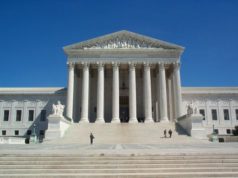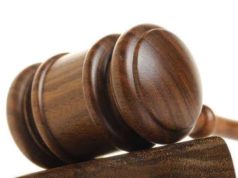
The concept of symbolic speech refers to the use of nonverbal conduct as a form of expression protected by the First Amendment of the US Constitution. Symbolic speech includes actions such as burning the American flag, wearing armbands, and participating in protests. Over the years, the Supreme Court has heard numerous cases related to the concept of symbolic speech, grappling with questions of how to balance free speech protections with other societal interests. In this article, we will examine some of the most significant Supreme Court cases related to symbolic speech, exploring how the Court’s decisions have shaped free speech protections in the United States.
One of the most significant Supreme Court cases related to symbolic speech is Tinker v. Des Moines Independent Community School District. This 1969 case involved a challenge by a group of students to a school district policy prohibiting the wearing of black armbands as a form of protest against the Vietnam War. The Supreme Court held that the
First Amendment protects the rights of students to express their views in a non-disruptive manner, finding that the wearing of armbands is a form of symbolic speech.
Texas v. Johnson (1989)
Another significant Supreme Court case related to symbolic speech is Texas v. Johnson. This 1989 case involved a challenge to a Texas law that prohibited the desecration of venerated objects, including the American flag. The Supreme Court held that the burning of the flag constitutes a form of symbolic speech protected by the First Amendment. This decision has been controversial, with some arguing that flag-burning constitutes a form of hate speech that should not be protected.
United States v. O’Brien (1968)
United States v. O’Brien is a 1968 Supreme Court case that involved a challenge to a federal law criminalizing the destruction of draft cards. The Supreme Court upheld the law, finding that it furthered a substantial government interest unrelated to the suppression of free speech. The court established a test for evaluating the constitutionality of laws that burden expressive conduct, known as the O’Brien test. The test requires that the law further an important or substantial government interest, that the government’s interest be unrelated to suppressing free speech, and that the law be narrowly tailored to advance that interest.
Cohen v. California (1971)
Another significant Supreme Court case related to symbolic speech is Cohen v. California. This 1971 case involved a challenge to a California statute that prohibited the display of offensive messages in public. The Supreme Court held that the display of a jacket bearing the phrase “F*** the Draft” constituted a form of protected speech under the First Amendment. This decision established the principle that offensive speech is protected by the First Amendment.
Conclusion
The concept of symbolic speech represents an important facet of free speech protections in the United States. The cases discussed above represent just a few examples of the many cases that the Supreme Court has heard related to symbolic speech. Through its decisions, the Court has established important principles related to free expression, including the right to engage in nonverbal conduct as a form of expression. As such, it is important that we continue to engage with the Court’s decisions related to symbolic speech, to ensure that we strike an appropriate balance between free speech protections and other societal interests.
Symbolic speech is seen as a representation of ones beliefs or messages in the form of nonverbal communication. This type of presentation can be found in venues of political activity in the form of silent rallies, marches, the wearing of apparel such as pins and armbands, and the exhibition as well as destruction of nationally-recognized items such as the practice of flag-burning.
A landmark Supreme Court case that held such practices as its focus for contention was Texas v. Johnson. The Court’s ruling reversed flag-desecration prohibitions in all but 2 states. Though it may be applicable to multiple parts of the Constitution, probably the most significant area is that of the First Amendment. This Amendment entails that no law infringe upon the rights to the “free exercise of religion,” “freedom of speech,” and “freedom of the press”. Symbolic speech, then, appears to touch upon these in some way or another, especially when referencing war protests.
A significant example of a major case concerning that of symbolic speech Tinker v. Des Moines. In this case, five students had been suspended due to their wearing of armbands denoting peace. They argued that such apparel denoted a form of symbolic speech, which is a branch of rights set forth within the First Amendment. The Court ruled in their favor, finding that such suspension violated their Constitutional rights to freedom of speech. These individuals were not seen to have encroached on the rights of others, nor did they create
any disruption out of the ordinary. Their wearing of the patches presented no irregularity other than a difference in clothing.
Another case, which challenged the parts of the Constitution that dealt with that of symbolic speech, was United States v. O’Brien, which had varying consequences. The basis of this case arose from O’Brien’s burning of his Selective Service card on the steps of the courthouse. In his mind, he did so in protest of the Vietnam War. In the view of the Government, however, he had violated their rule that registrants maintain possession of their draft cards so as to ensure the continued appropriate procedure of the military draft. O’Brien, however, believed that his actions were just a form of symbolic speech as can be supported by the First Amendment.
The Supreme Court ruled against him, though, as it set forth that the country still had a distinct interest in maintaining the integrity of draft cards. Therefore, despite its right to protect freedom of speech rights, it does not possess the same rights to “protect all things that may be extraneously labeled symbolic speech,” such as occurred in this case. These two varying cases represented both the existence of adequate forms of symbolic speech as well as situations in which such actions must not also interfere with other governmental concerns.



























